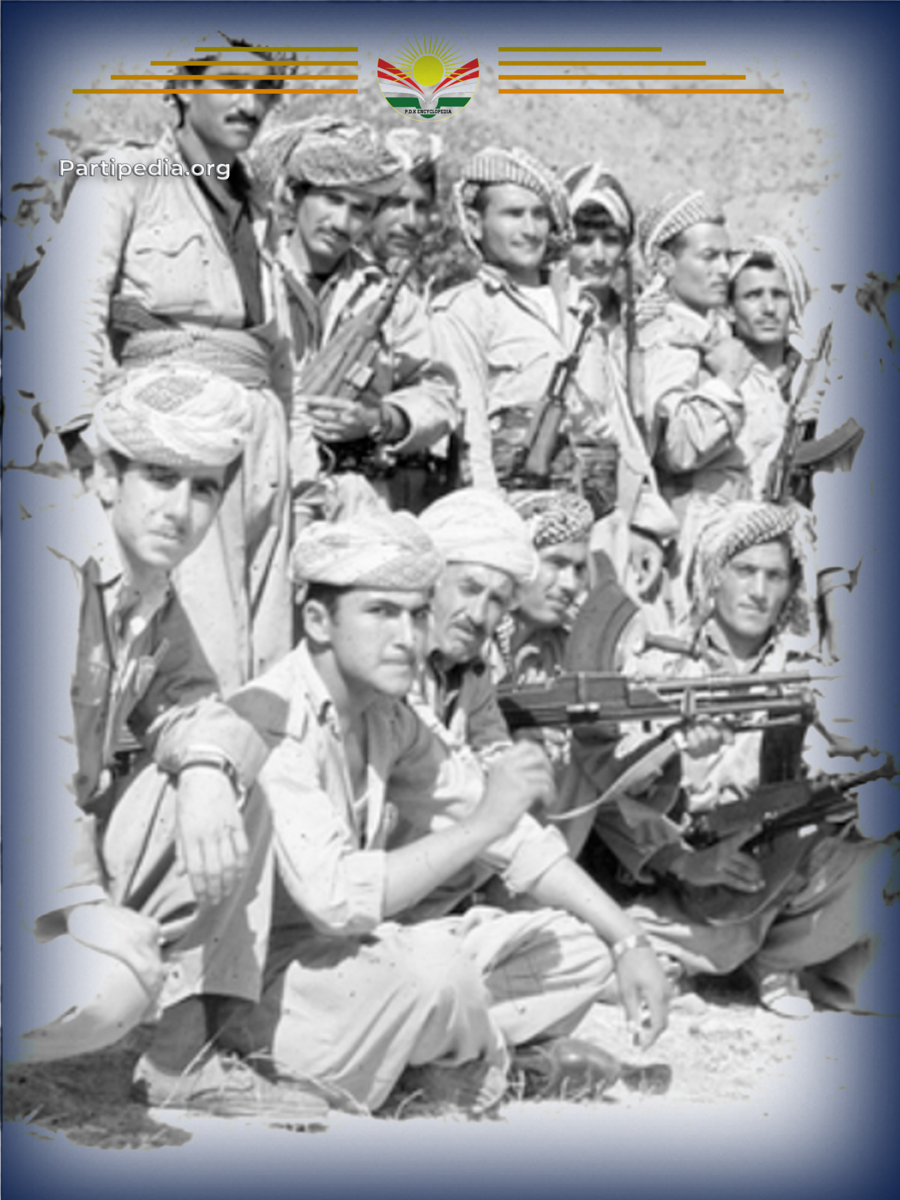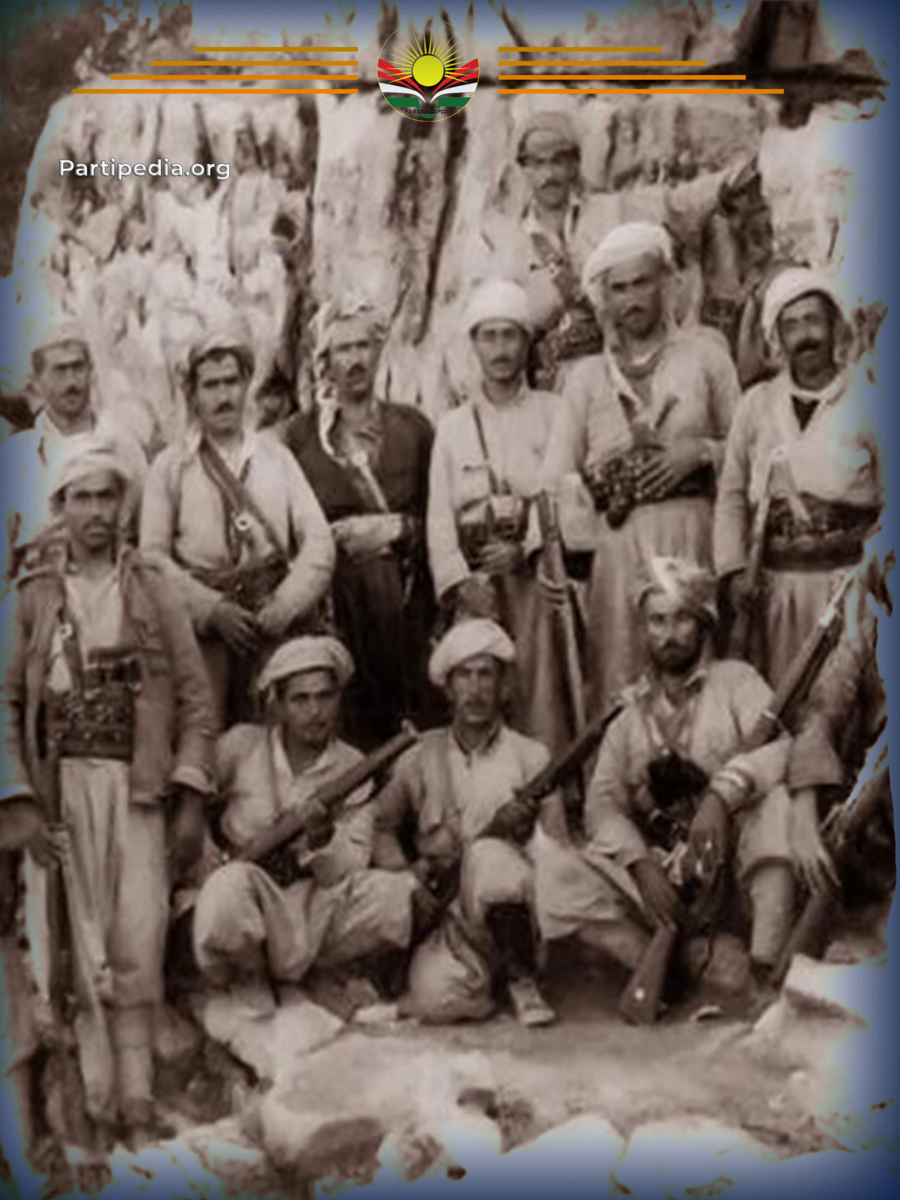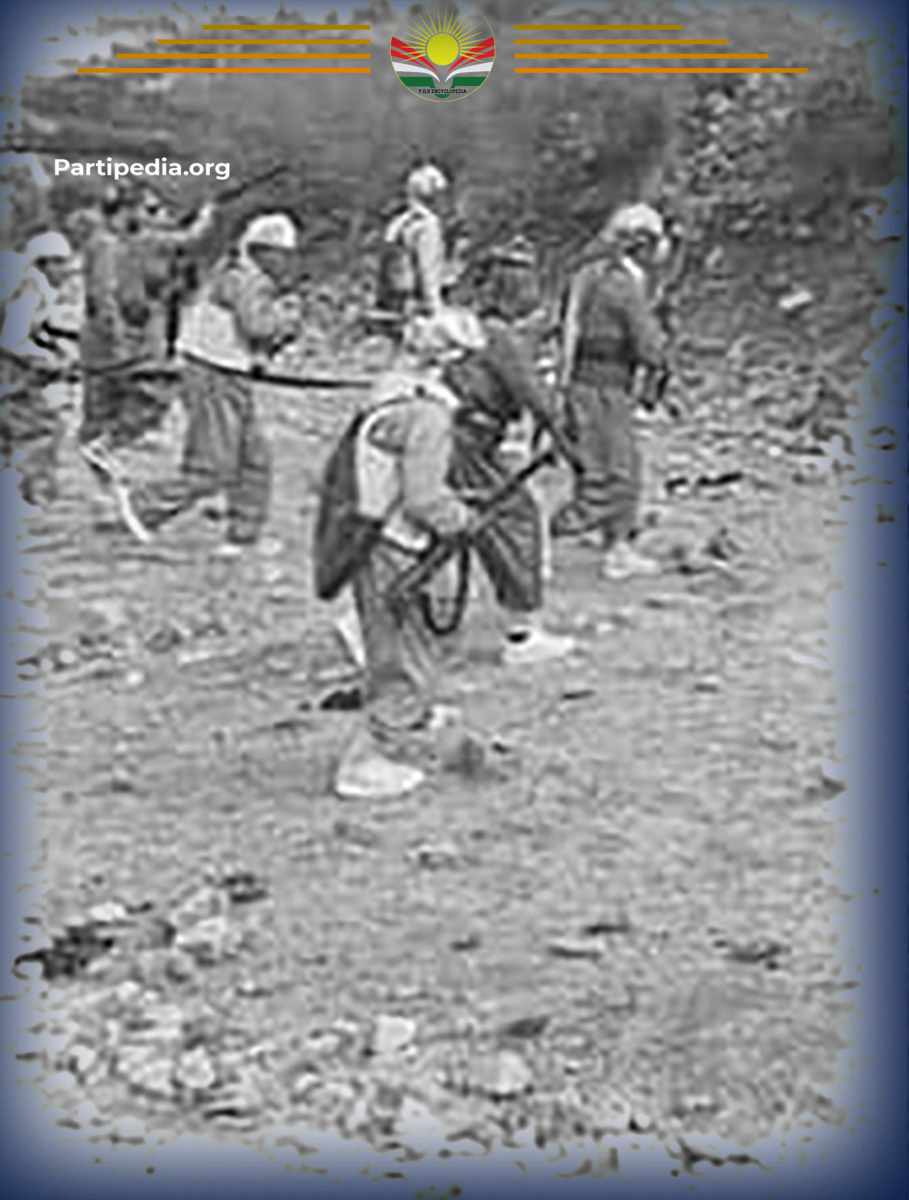Zozk Mountain is a well-known mountain located in South Kurdistan, which provides a breathtaking view of Soran city and is surrounded by several villages. To the east of the mountain are the villages of Barsrin and Piruswan, while Sitkan is situated to the north. On the other hand, Badlian and Delzian are located to the west, and Barzewe, Kewrin, and Guan are situated at the base of the mountain. During the September Revolution, these villages played a vital role in providing shelter and support to the Peshmerga, particularly during the most challenging moments of the war.
Mount Zozk was of military importance to the September Revolution because of its geographical location and its strategic location, where the Hamilton Highway passed through the foothills. On the one hand, to maintain the road, and on the other hand, which looks at the Diana plain, it was a substantial point for the harmony and correspondence between both Barzan and Balakaity regions, which was the main headquarters of the leadership of the September Revolution. Therefore, the Iraqi government always planned to take strategic places and disrupt the revolution in all these places.
The Peshmerga's fighting with the Iraqi army in the mountains dates back to 1965 when the Kurdistan Peshmerga Forces established a line of defence in the Zozk Mountains, the Srot Gorge, the Omaragha Gorge and the Musakawa River. The Iraqi army was constantly planning and trying to reach strategic locations.
In the early autumn of the same year, with the support of attack planes and tens of thousands of soldiers and MERCENARIES, The attack on Mount Zozk began; the Iraqi army first launched intensive shelling on the mountain; after the shelling, thousands of Iraqi soldiers attacked the Peshmerga positions, after several intensive attacks, were able to capture one of the heights that hold the mountain streams, This posed a threat to the Peshmerga positions at the foot of the mountain. Therefore, it was decided to retreat in order to counterattack with a solid plan and be able to take the places they had lost. However, they made several secondary attacks to take the places but were unsuccessful.
After a good of preparation, the Peshmerga forces with a solid plan and a widespread attack under the command of Haji Berokhi, battalion commander and several other military officials such as: (Arif Yasin, Ramazan Yasin, Jader Goezi, Aziz Khan Mahajro Sabah Mirkay Kaylani & Ali Shakak & Jawhar Bersiavi)also (Hamida Fandi, Mustafa Nerwayi and Hassan Khal Hamza) attacked the Iraqi army.
After several hours of heated fighting, the Iraqi army soldiers could not resist the Peshmerga attack but were defeated and fled. About 21 soldiers had thrown themselves down from the mountain behind the village of Guan, and a large number of bodies were killed on the battlefield. The Peshmerga forces had two martyrs, and five had injuries.
The victory of the Peshmerga and the defeat of the Iraqi army angered the Iraqi government officials and their officers, who decided to occupy these places and take revenge on the Peshmerga forces. On May 3, 1966, they launched a major offensive in the foothills of Mount Hindren, Zozk and Omaragha Strait, supported by warplanes and artillery.
After several days of continuous fighting, which was led by Massoud Barzani and Idris Barzani, the Iraqi government put pressure on the Peshmerga positions. It had captured several places in Mount Zozk. Mullah Mustafa Barzani, the leader of the Kurdistan Revolution, was present on the battlefields in Mount Zozk. The Peshmerga forces defeated the Iraqi army on all sides and caused heavy damage to it, killing 400 soldiers and wounding (600) soldiers.
Among the objects captured by the Peshmerga were four 75mm cannons, four 4,20 mortars, ten 2,3 knot mortars, 600 pieces of light weapons, 15 wireless devices and many bullets.
After the resumption of the war in 1974, when the Iraqi army successfully lowered its tanks from Mount Korak to the Bekhal road with a large force full of advanced heavy and light weapons, the strategy of the war changed. The Peshmerga was forced to leave Mount Goraz and retreat behind Diana. Leave the foothills of Mount Korak in Ruandz and withdraw to the BNAkawl and Barzewa. A line of defence was established in the Akoyan Valley, Mount Hindrin, Mount Zozk and the Omaragha Gorge.
The Iraqi army, which had suffered such a defeat in the attack on the Strait of Omaragha on September 3, 1974. they had suffered heavy casualties and had to retreat to Badlian village. Therefore, they were looking for another way to cover up their defeat and occupy another strategic location to extend their power over the entire region. According to the information received by their military leaders, there were not many Peshmerga forces on Mount Zozk. They saw this as an opportunity. They had allocated a battalion to the 8th Brigade. On September 20, 1974, they captured several Peshmerga positions in Zozk Mountain.
However, the Peshmerga forces did not just stop the attacks of the Iraqi army. Still, they responded very strongly and counterattacked the areas that the Iraqi military had captured with the help of the revolutionary artillery, and They were able to capture Mount Zozk.
In an interview, one of the Peshmergas who participated in the battle of Mount Zozk told us: “Early in the morning, we saw jashes and Iraqi army soldiers approaching us who had attacked the Peshmerga positions from Diyana They opened fire on us, and several of our Peshmergas were wounded. There was a ridge above us that was a very important and strategic point. Our commander, Haji Berokhi, who was the commander of the front, decided to counterattack and capture the occupied point as soon as possible. After the Peshmerga counterattacked the occupied position with the support of a heavy weapons cannon from the support force, we were able to take the place after a heated battle and achieve victory. The enemy could not withstand our attack and retreated to their bases in Diyana. In this battle, our victims were one martyr and one wounded, but the enemy suffered a heavy defeat and suffered severe damage. The bodies of three soldiers and an officer fell into the hands of the Peshmerga. They would have suffered much more damage if it weren't for the rocks, gaps and large boulders they hid in."
But a week later, on September 27-28, 1974, an Iraqi army force of the 5th Infantry Brigade and a battalion of the 29th Special Forces, supported by a tank battalion, attacked Zozk Mountain. According to a well-organised military plan, the Peshmerga forces confronted them with a strong defence. They responded to the Iraqi army's attack with all kinds of light and heavy weapons at their disposal. They were able to cause severe damage and exterminate most of the officers and soldiers of this battalion, one of whom was the branch commander.
The importance of capturing Mount Zozk for the Iraqi army was so strategic that the military leaders insisted on capturing it; they put pressure on the infantry, tanks, armoured vehicles, artillery and air force to attack the mountain again. They launched another offensive, but this time they were able to capture it on September 30, 1974.
However, the Peshmerga forces once again prepared to confront and counterattack. Under the leadership and supervision of Massoud Barzani, they planned a counterattack. As a result of the attack, the Peshmerga forces achieved a great victory. They caused significant damage to the Iraqi army, which included the destruction of five tanks and the killing of 500 soldiers whose bodies were left on the battlefield.
The geographical location of Mount Zozk consists of two heights, and one called the Cup of the Star and the other cup of the Bira, about (1-2) km apart. For a while, the Peshmerga forces were in the Star Cup and the Iraqi army in the Beer Cup. In one of the Peshmerga's daytime campaigns to the height of Kupi Bir, between them is a flat land without trees and rocks. The Peshmerga could not take it back from the Iraqi army because it suffered heavy casualties, including 17 martyrs and a number of wounded.
The strategy of the Iraqi army to capture Mount Zozk was such that after all the defeats and losses it had suffered, they were still not ready to give up. On October 3, 1974, they attacked the mountain again and took it completely. As a result of the imbalance in weapons, ammunition and strength, the Peshmerga decided to retreat and withdraw to save the day, and they set up another line of defence in the Beshe Gorge, Hassan Beg Mountain and Sare Bardi to prevent the enemy army from advancing further and approaching the revolutionary leadership.
Although Iran supported the revolution with a 130mm artillery battalion and two anti-aircraft missile batteries, it reached the battlefield in October 1974. However, it did not have any positive and critical impact on the battlefields and did not play an effective role in stopping the advance of the Iraqi army and changing the balance of power. On the contrary, it led to weakness, negligence and neglect on the battlefields by the Peshmerga. They put all their hopes on this artillery that in the future, the artillery of this Iranian battalion will become a solid obstacle to the attack and advance and occupy Kurdistan territory. Unfortunately, this did not happen because their shelling was not very accurate and did not hit their targets. Instead, they had no effect that would be of the expected benefit in times of distress and need.
During the winter season, the Iraqi army faced unfavorable conditions for advancing and confronting the Peshmerga forces. The Peshmerga forces were constantly seeking opportunities to deal a significant blow, and in December 1974, they launched multiple attacks on the Iraqi army. In December 1975, they attacked the army positions and successfully captured half of Mount Zozk.
Resources:
1- غازی عادل گهردی، پێشمهرگهیهك له خزمهت بارزانیدا ... حهجی بێڕۆخی، بهرگی یهكهم، چاپی دووهم، 2020، ل315.
2- غازی عادل گهردی، سهرچاوهی پێشوو، ل345-377
3- مسعود بارزانی، بارزانی و بزوتنهوهی ڕزگاریخوازی كورد، بهرگی سێیهم، بهشی دووهم، چاپی یهكهم، ههولێر 2004، ل158
4- سهنگهر ئيبراهيم خۆشناو، ڕوداوه سهربازيهكانى شۆڕشى ئهيلوول1970-1975، چاپى يهكهم، ههولێر، 2022، ل220.
5- دیمانه: گۆرگیس یهلدا تهرخان، پێشمهرگهی شۆرشی ئهیلوول، ئهرشیفی ئینسكلۆپیدیا
6- سهنگهر ئيبراهيم خۆشناو، سهرچاوهی پێشوو، ل220.
7- سهنگهر ئيبراهيم خۆشناو، ههمان سهرچاوه، ل220
8- دیمانه لهگهڵ قادر حهسهن سیتكانی پێشمهرگهی شۆرشی ئهیلوول 31/12/2022.
9- سهنگهر ئيبراهيم خۆشناو، ههمان سهرچاوه، ل220-221.
10- مسعود بارزانی، ههمان شهرچاوهی پێشوو ، ل159.
11- ئیبراهیم جلال، باشووری كوردستان و شۆڕشی ئهیلوول، بنیانان و ههڵتهكاندن، 1961-1975.چاپی چوارهم، 2021، ل615.








